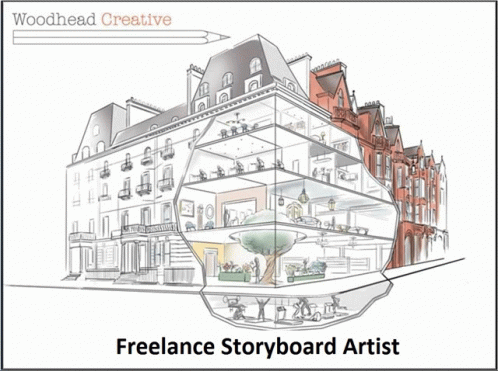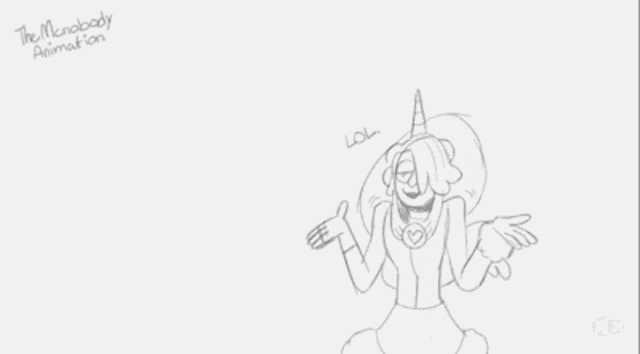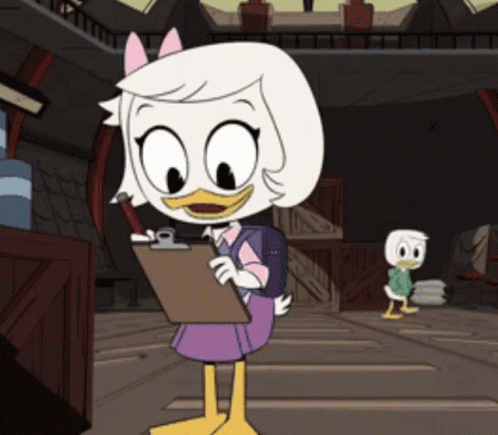"By failing to prepare, you are preparing to fail."
Benjamin Franklin
Cover GIF by pinkymalinky via Tenor
Embarking on a new animation project can be an exciting and rewarding experience. But before diving headfirst into the creative process, it's crucial to lay a solid foundation by following the essential pre production steps.
This will ensure the success of your animation project and help you overcome the challenges faced by many freelance animators and animation studio owners.
In this blog, we will explore the key pre production steps that you must take to set your animation project on the right track!
Unlocking Success Through Pre Production Steps
1. Concept Development: The Birth of an Idea

The first pre production step in any animation project is developing a strong concept. This includes brainstorming ideas, researching the target audience, and establishing a clear vision of the story you want to tell.
Creating a compelling concept is the foundation of your animation and will set the tone for the rest of the project. It's essential to consider your audience's preferences and interests to develop a concept that resonates with them.
2. Script Writing: Crafting the Narrative

Once you have a solid concept, it's time to translate it into a well-structured script. This crucial pre production step involves writing the dialogue, action, and scene descriptions that will guide your animation.
A well-written script provides a clear roadmap for your project, ensuring a smoother animation process and a more cohesive final product. To ensure a high-quality script, consider collaborating with a skilled writer or script editor who can help refine your story.
3. Storyboarding: Visualizing the Story

GIF by woodheadcreative via Tenor
With a script in hand, the next pre production step is creating a storyboard. This involves sketching out the scenes and actions in a series of panels, much like a comic book. Storyboarding allows you to visualize your animation and make necessary adjustments before beginning the production phase.
This step helps save time, resources, and effort by identifying potential issues early on. It's a good idea to collaborate with your team during the storyboarding process, as they can provide valuable input and suggestions.
4. Character Design: Bringing Personalities to Life

GIF by nayaesthetic via Tenor
An essential pre production step for any animation project is designing memorable and engaging characters. This involves creating character sheets with different poses, expressions, and outfits to showcase the personalities and appearances of each character.
Investing time in character design ensures that your animation connects with the audience and leaves a lasting impression. Don't forget to consider character development and backstory, as these elements can add depth and complexity to your characters.
5. Location and Set Design: Building the World

GIF by NewVersion via Tenor
Similar to character design, location, and set design are crucial pre production steps that help establish the world in which your animation takes place. Creating detailed location designs and set layouts will aid in the production process and contribute to the overall quality of your project.
A well-designed environment can enhance the story and create a more immersive experience for the audience. Be sure to consider the visual style and tone of your animation when designing locations and sets, as they play a significant role in setting the mood.
6. Animatic: Previewing the Animation

GIF by Echos_Show via Tenor
An animatic is a rough, timed version of your storyboard, often accompanied by temporary sound effects, music, and dialogue. This pre production step helps you assess the pacing, scene transitions, and overall flow of your animation.
By creating an animatic, you can make adjustments and fine-tune your project before diving into the time-consuming production process. It's essential to gather feedback from your team during this stage, as their input can help improve the final product.
 | Looking to Elevate Your Business Skills as an Animator? |
Unlock your potential with our FREE Masterclass Our free masterclass is the perfect opportunity to do just that. You'll learn what you need to take your animation business to the next level. | |
7. Voice Acting and Sound Design: Bringing Your Animation to Life

Before moving into production, it's important to finalize the voice acting and sound design for your project. This pre production step involves casting talented voice actors who can bring your characters to life, as well as working with skilled sound designers to create immersive soundscapes and effects.
Paying attention to these elements during the pre-production stage will enhance the overall quality of your animation and contribute to a more engaging viewer experience.
8. Production Planning: Organizing for Success

The final pre production step is planning the production process itself. This includes creating a detailed schedule, allocating resources, and assembling a talented team of animators, artists, and sound designers.
Proper planning sets the stage for a smoother production phase, allowing you to avoid potential setbacks and complete your animation project on time and within budget. Be sure to establish clear communication channels and set realistic expectations for your team to ensure a successful production process.
9. Establishing an Art Style and Animation Techniques

Before you start animating, it's crucial to determine the art style and animation techniques you'll be using for your project. This pre production step involves researching various animation styles and techniques to find the one that best fits your project's vision and budget.
Whether you choose 2D, 3D, or stop-motion animation, having a clear visual direction will streamline the production process and contribute to a cohesive final product.
10. Asset Creation: Preparing for Production

The last pre production step before diving into the animation process is asset creation. This involves creating all the necessary visual elements, such as character models, props, and backgrounds, needed for the production phase.
By having all the assets ready before production begins, you can minimize delays and ensure a more efficient workflow.
Mastering Pre Production Steps for a Successful Animation Career
By following these essential pre production steps, you will set your animation project up for success and overcome many of the challenges faced by freelance animators and animation studio owners. Remember, investing time in the pre production process will pay off in the long run, leading to a higher-quality final product and a more rewarding animation career.
If you're looking to kickstart your animation career and learn more about the business side of the industry, consider joining our Animation Business Accelerator Program. This comprehensive program offers on-demand video lessons, live mentorship calls, mini-courses, and a bustling, supportive community to help you grow your freelance animation business or studio.
And for more insights, check out our blog on "How to Start an Animation Studio"!


